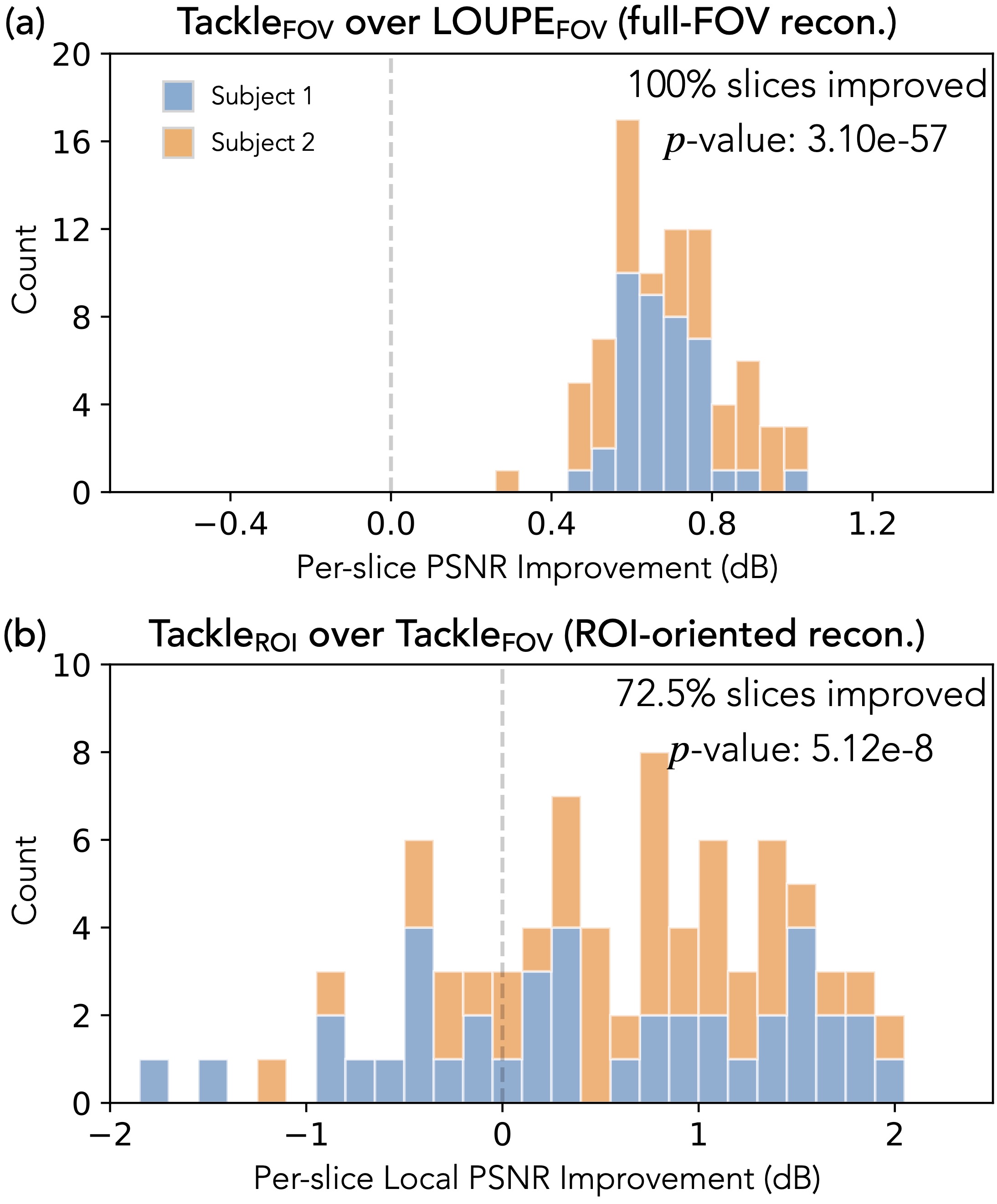
1California Institute of Technology 2Massachusetts Institute of Technology 3Harvard Medical School

Compressed sensing magnetic resonance imaging (CS-MRI) seeks to recover visual information from subsampled measurements for diagnostic tasks. Traditional CS-MRI methods often separately address measurement subsampling, image reconstruction, and task prediction, resulting in suboptimal end-to-end performance. In this work, we propose TACKLE as a unified framework for designing CS-MRI systems tailored to specific tasks. Leveraging recent co-design techniques, TACKLE jointly optimizes subsampling, reconstruction, and prediction strategies to enhance the performance on the downstream task. Our results on multiple public MRI datasets show that the proposed framework achieves improved performance on various tasks over traditional CS-MRI methods. We also evaluate the generalization ability of TACKLE by experimentally collecting a new dataset using different acquisition setups from the training data. Without additional fine-tuning, TACKLE functions robustly and leads to both numerical and visual improvements.
paper [link]
Zihui Wu, Tianwei Yin, Yu Sun, Robert Frost, Andre van der Kouwe, Adrian V. Dalca, and Katherine L. Bouman (2023). "Learning Task-Specific Strategies for Accelerated MRI." arXiv:2304.12507, under review.
bibtex [show]

We propose a unified framework, called TAsk-specific Co-design of K-space subsampLing and prEdiction (TACKLE), for designing task-specific CS-MRI systems. We show that TACKLE enables better task performance than existing reconstruction-oriented methods on a variety of tasks summarized on the bottom left panel above.
In all the tasks we consider, TACKLE outperforms baselines both numerically and visually. We show some visual examples below.
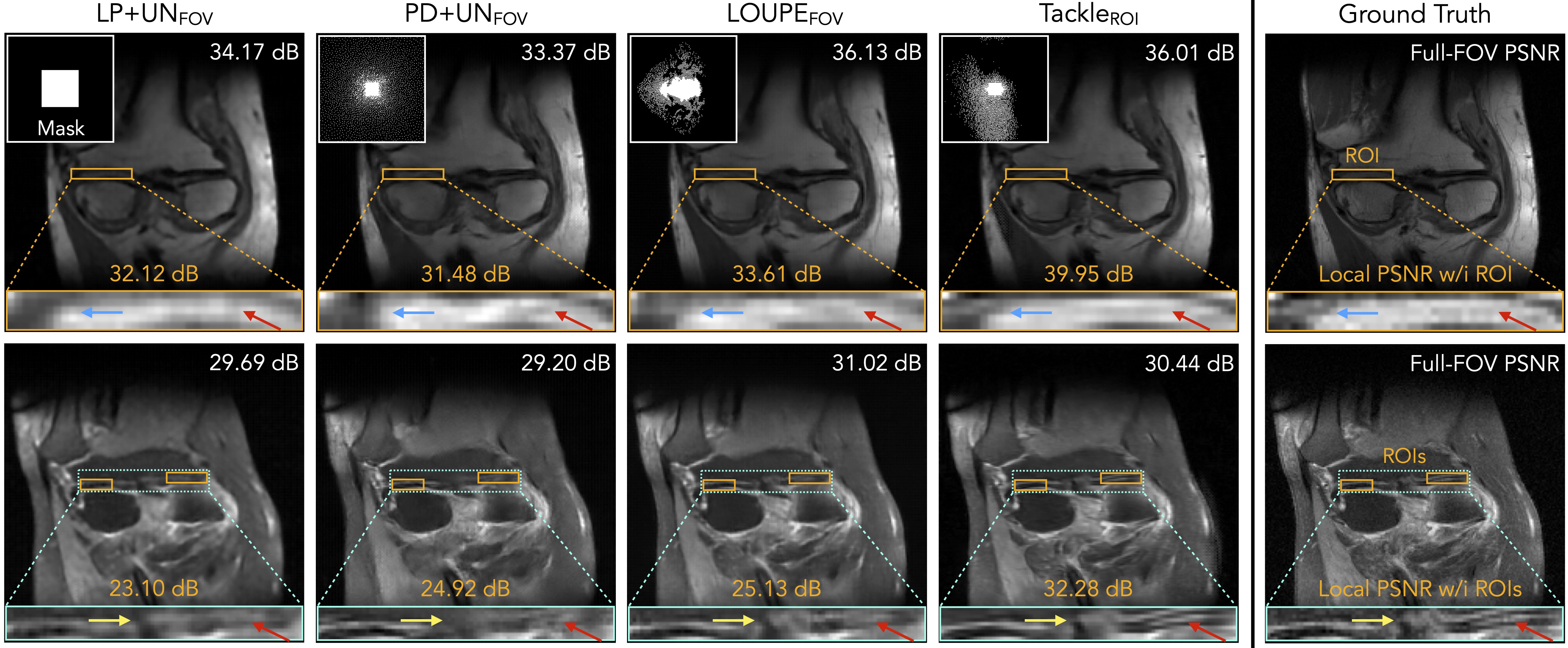

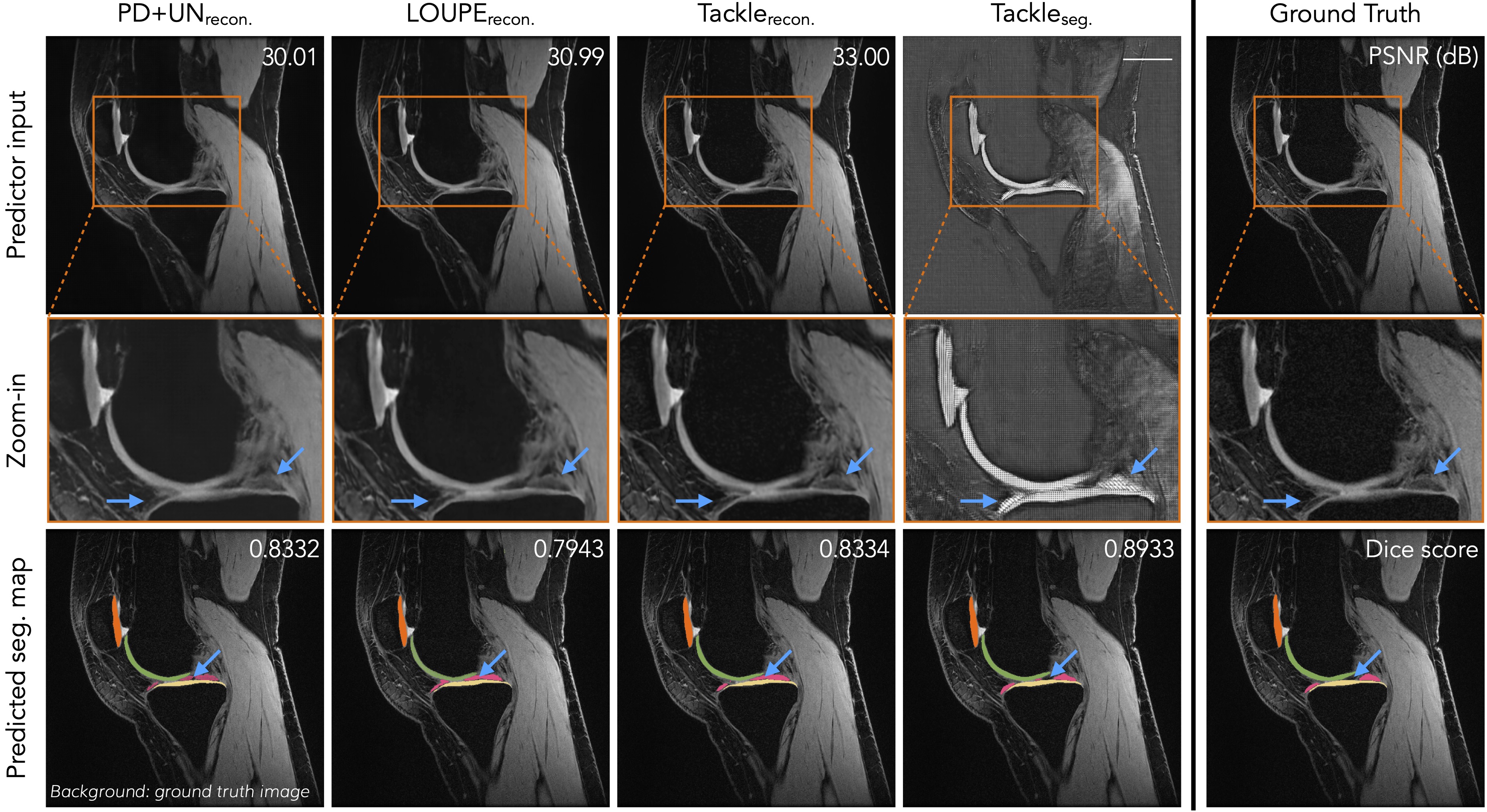
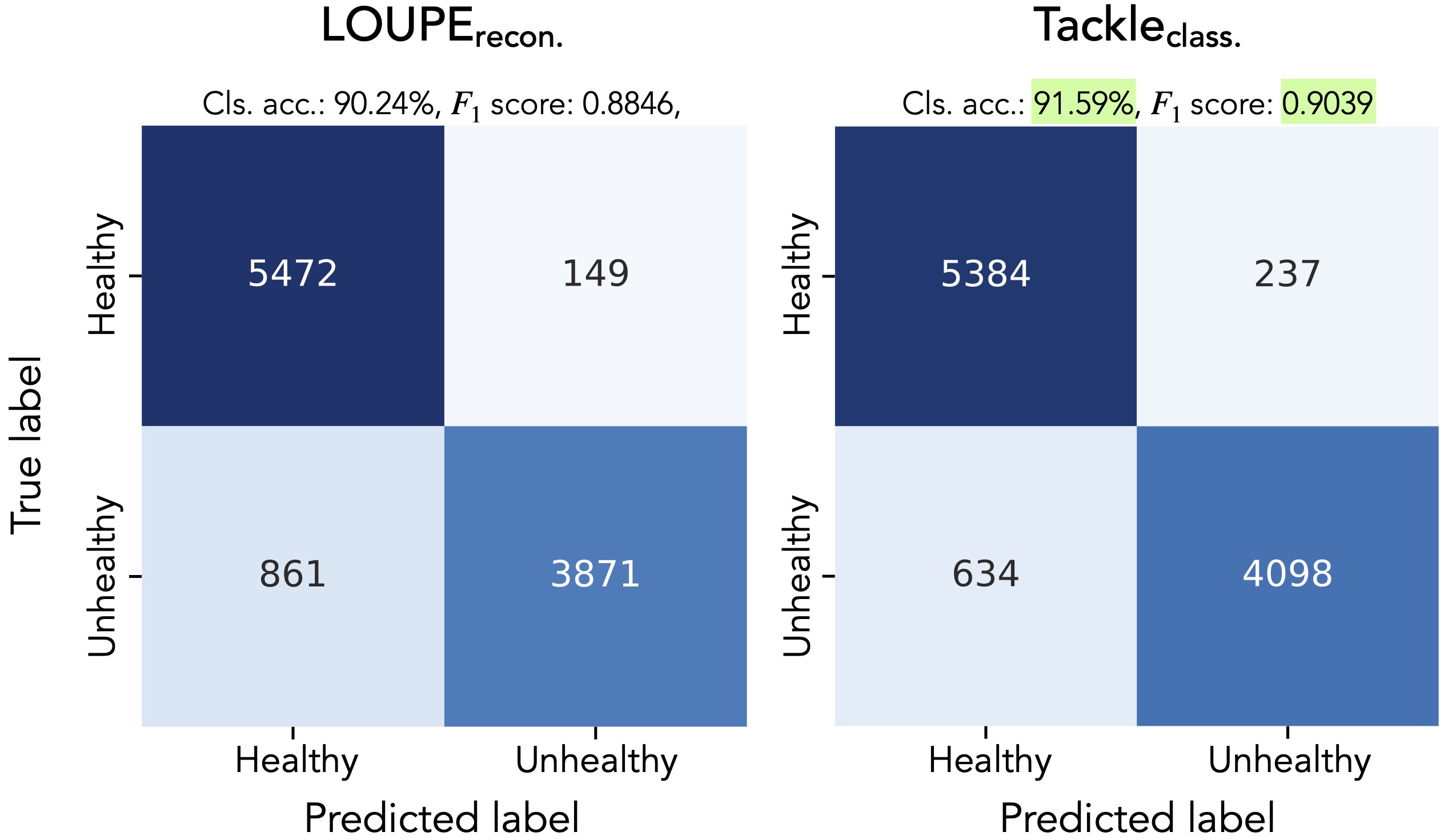
TACKLE leads to substantial visual improvements on out-of-distribution data that we experimentally collect with different acquisition parameters.
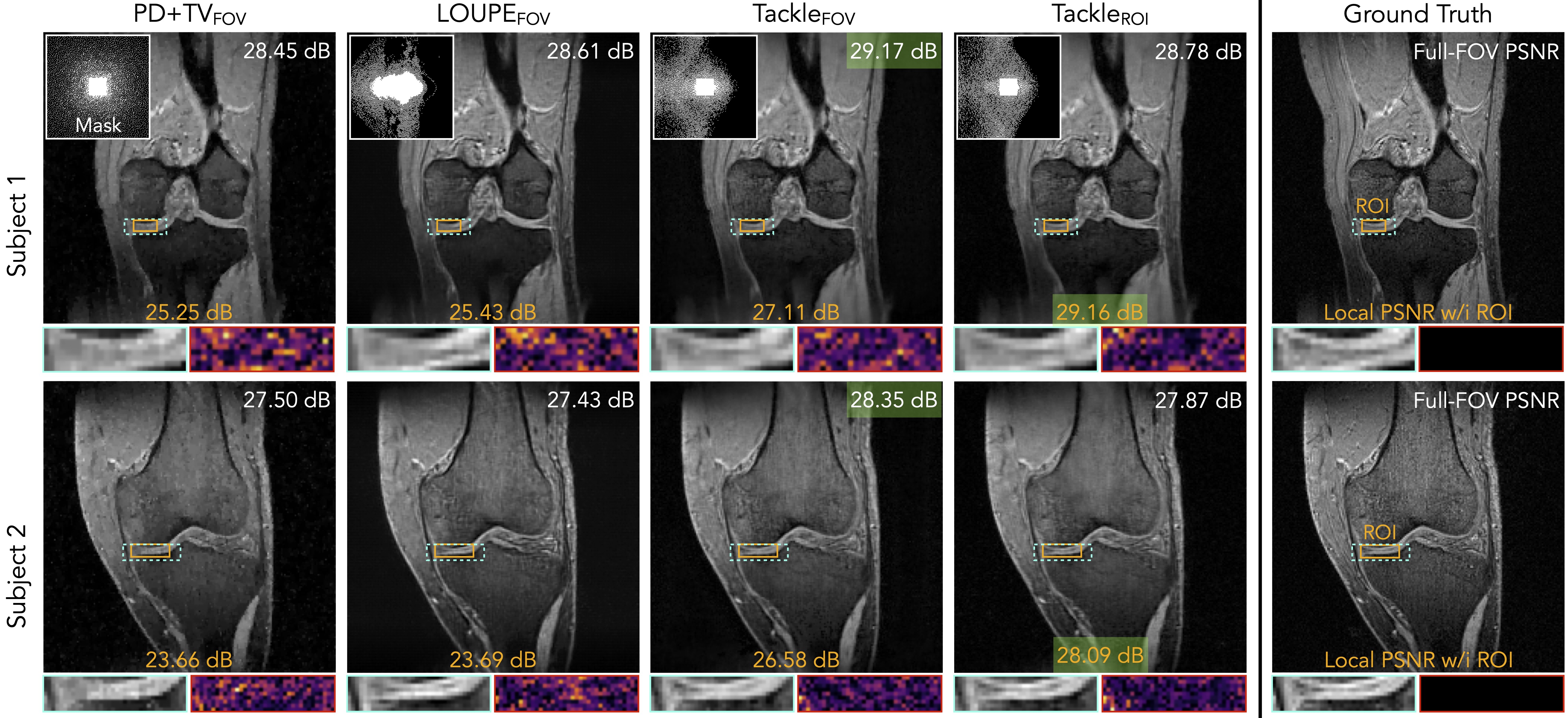
A pair-wise comparison between TACKLE and baselines on each slice of the dataset demonstrates that improvement is both consistent and statistically significant.
